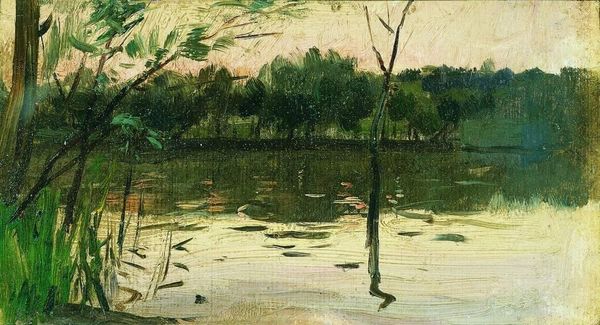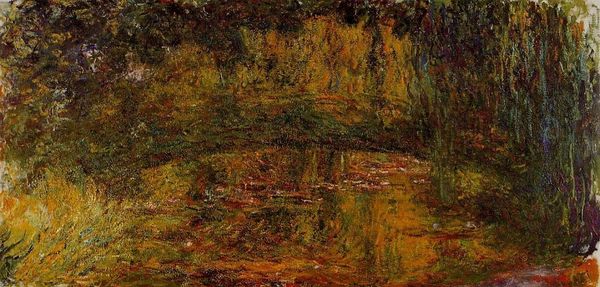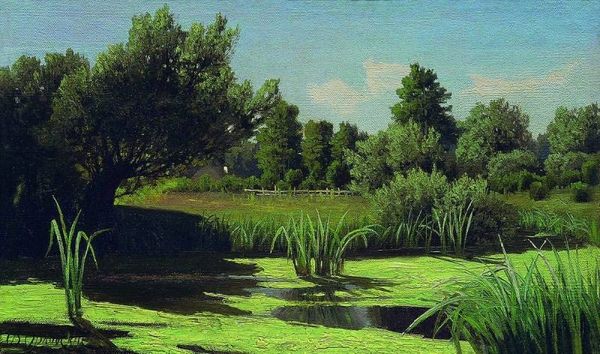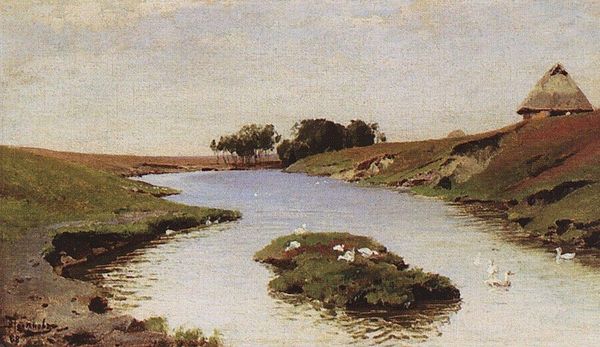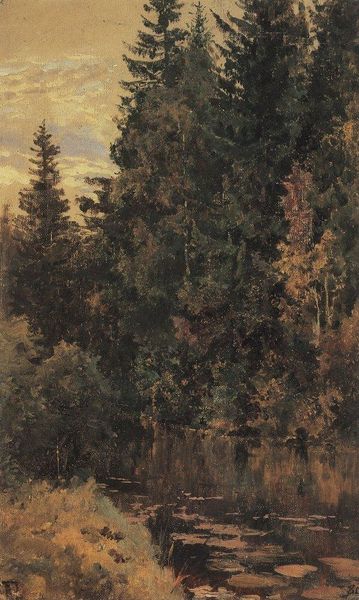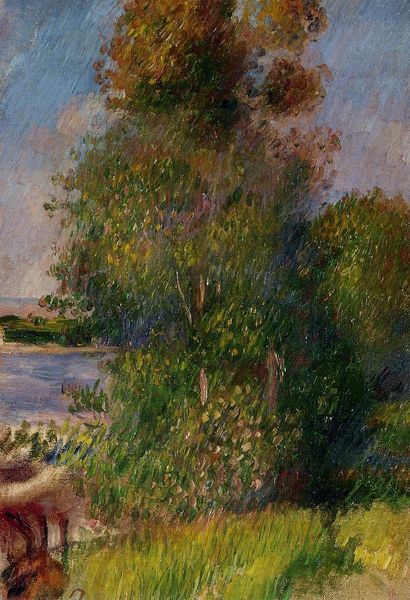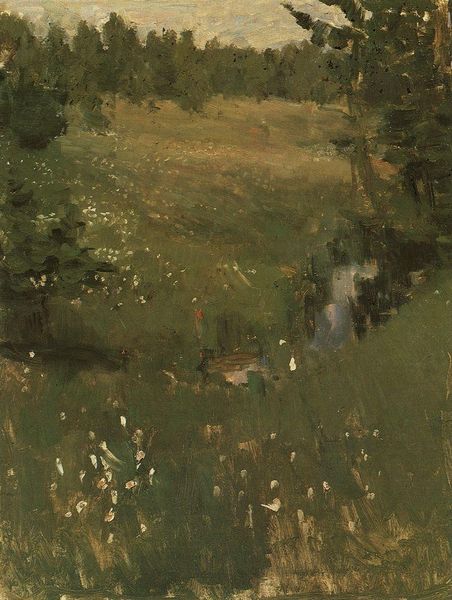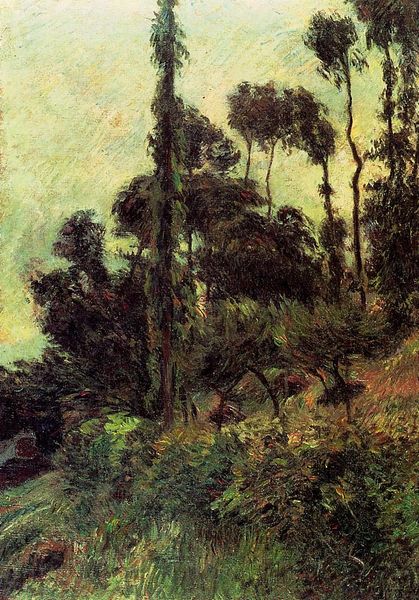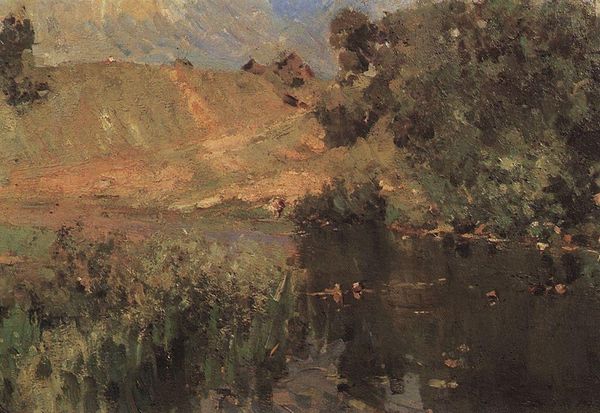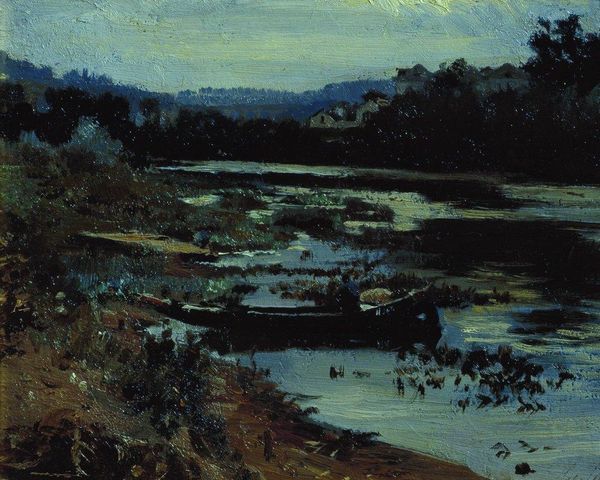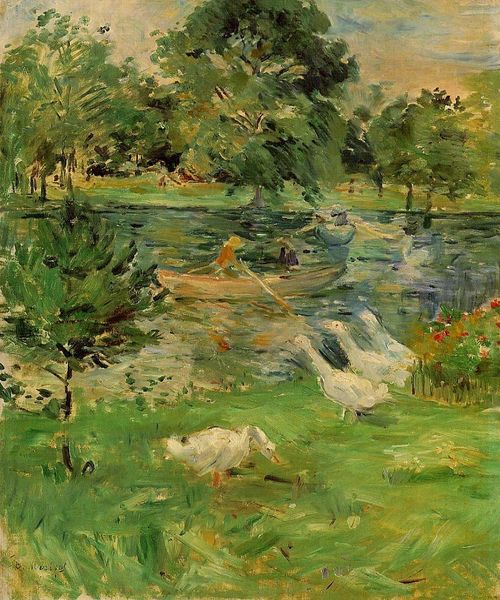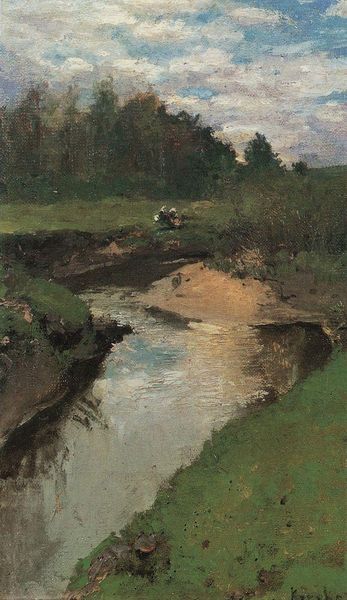
painting, plein-air, oil-paint
#
painting
#
impressionism
#
plein-air
#
oil-paint
#
landscape
#
impressionist landscape
#
watercolor
Copyright: Public domain
Curator: Here we have Károly Lotz's oil painting, "Waterfront", an interesting, if undated, piece. Editor: Oh, this immediately conjures memories of humid summer afternoons, doesn't it? It’s that almost palpable stillness before a storm… I can practically smell the earth! Curator: That’s perceptive. Observe how Lotz uses visible brushstrokes in a "plein-air" style. The structure is cleverly designed—a high horizon line compresses the scene vertically, enhancing the feeling of dense foliage. What seems casual is, in fact, a highly structured composition. Editor: I am drawn to the way light seems to swim on the surface of the water. It looks more like a mirage than an accurate representation. Curator: You are right, this isn't photographic realism. Note the textures Lotz coaxes from the paint. They are as important, I think, as the forms depicted. The scene itself has a conventional beauty. Editor: Beauty, yes, but it’s a rather melancholy beauty. Almost brooding, don't you think? There is something elegiac here—it’s not just the pretty scene; it is a meditation on how quickly such scenes transform, perhaps vanish entirely. Curator: Indeed. The formalist approach encourages us to consider art not just as representation but as self-contained structures that reflect upon perception and being. Editor: For me, the true triumph here lies in Lotz's ability to evoke mood. You can practically feel the weight of the air and hear the silence amplify. I will remember the painting for that feeling and not necessarily for its formal qualities. Curator: A beautiful perspective to share and on that note, our time is sadly at its end.
Comments
No comments
Be the first to comment and join the conversation on the ultimate creative platform.
